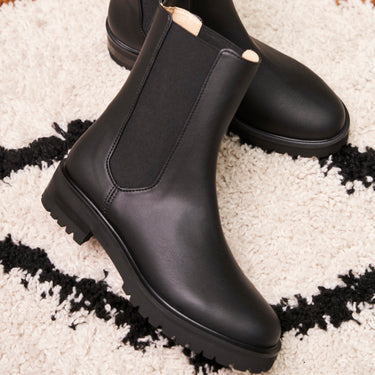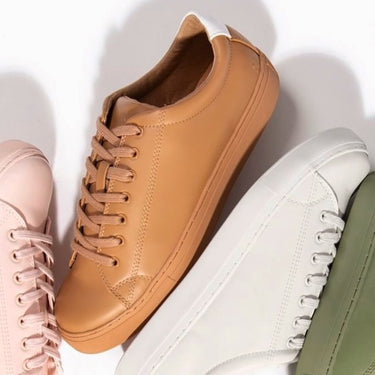The Animal Ingredients Hiding In Your Cosmetics
When shopping for animal-friendly beauty, there are two main factors to consider: whether the product is cruelty-free (meaning free from animal testing) and whether it's vegan, which means that no animal-derived ingredients have been used.
By Sascha Camilli: writer, speaker, activist and vegan fashion expert.
While the former can indeed be confusing, there are certifications in place to assure that cosmetics products aren't tested on animals. But when it comes to vegan ingredients, things tend to get a bit trickier. There are not many schemes that certify vegan cosmetics – the Vegan Society and PETA's Beauty Without Bunnies are two of them – so generally, finding vegan beauty largely means becoming an expert label-reader.
Vegans are used to reading labels. After all, we've been deciphering the terms on food products for ages. But cosmetics are a whole different matter: in many cases, most of us wouldn't know the meaning of many terms that appear on the label of a beauty product. Below are some of the most commonly used substances that you may come across when shopping for beauty – if you see them, leave that jar or tub on the shelf.
Beeswax
Where it hides: lipsticks, lip balms, and other forms of makeup.
What it's made of: beeswax is made by bees – it makes up honeycomb. This ingredient is a direct product of the cruel honey industry where bees are forcefully routinely impregnated (just like cows on a dairy farm) and queen bees often have their wings cut off so that they cannot leave the colony.
Alternatives: vegetable oils and fats, carnauba wax, candelilla wax.
Carmine
Where it hides: lipsticks and other makeup that has a red colour.
What it's made of: carmine is made by crushing large quantities of cochineal insects who produce carminic acid to deter predators.
Alternatives: beetroot juice, synthetic dyes, fruit pigments.
Casein
Where it hides: anti-ageing skincare and hair products.
What it's made from: casein is a protein present in milk and dairy – usually cows' milk, but can also derive from other mammals.
Alternatives: soy protein.
Collagen
Where it hides: skincare, foundation, mascara.
What it's made of: Deriving from the connective tissue of animals' bodies, collagen is a protein often touted as regenerative and rejuvenating. This is a by-product of the cruel and environmentally devastating meat industry.
Alternatives: soy protein and plant oils.

Glycerine
Where it hides: soap, moisturiser, skincare and hair products.
What it's made of: animal fats – but there are also plant-based varieties, and it's not often possible to tell from the label which is which. So just stick to products that are certified as vegan, or where the brand can confirm that the product is vegan.
Alternatives: soya, coconut oil, or palm oil (which many vegans avoid due to its links to deforestation).
Guanine
Where it hides: lip gloss, nail polish, blushers, highlighters – mostly products that shimmer.
What it's made of: Guanine comes from the scales of fish. This crystalline substance is what gives the scales their shimmery appearance and is often used in cosmetics with an iridescent finish.
Alternatives: synthetic pearl and metal particles. Look out for mica, a mineral commonly used to add shimmer – it's been linked to child labour.
Keratin
Where it hides: often haircare, but also products meant for strengthening nails
What it's made of: the hair and horns of animals. Sometimes, keratin is a by-product of industries such as cashmere.
Alternatives: plant oils and soya protein
Lanolin
Where it hides: in hair products, lip balms, lipsticks, concealer, bronzer, eyebrow products.
What it's made of: lanolin is a wax that comes from the sebaceous glands of sheep, assisting in protecting their wool and skin from the elements. Often, lanolin comes from sheep who have been slaughtered for meat.
Alternatives: coconut oil, shea butter and vegetable oils.
Shellac
Where it hides: in nail polish and hairspray
What it's made of: hundreds of thousands of lac insects are killed to make this ingredient.
Alternatives: vegan shellac made from corn is now on the market!
Squalene
Where it hides: in skincare, deodorants, and lip balms
What it's made of: squalene comes from shark liver oil and is said to have anti-ageing properties.
Alternatives: this ingredient can also be vegan – when derived from wheat germ or olives.
If unsure, best to contact the brand – and if no confirmation can be found that the product truly is vegan, then refrain from purchasing. This will send a message to the brand that consumers value transparency, and that vegan cosmetics are worth investing in and researching.
By Sascha Camilli
About Sascha
Sascha Camilli is a vegan fashion writer, speaker and activist. Her book Vegan Style is out now on Murdoch Books. For more about Sascha, you can read our interview with her. You can also follow her on Instagram, Twitter and LinkedIn.
Cover image by Kelly Sikkema and second photo by Toa Heftiba, both via Unsplash.
For more great content like this in your inbox, sign up to our newsletter, and save 10% off your next purchase, plus great savings throughout the year.
































































